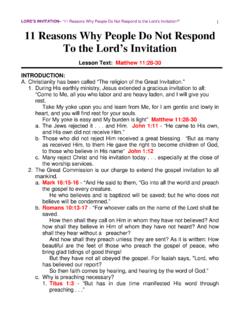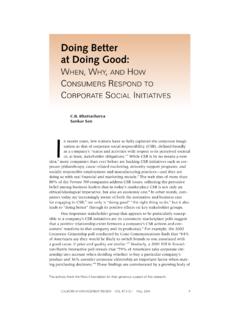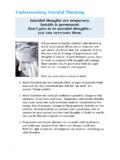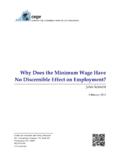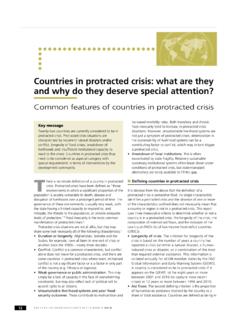Transcription of Why Don’t People Participate? - Physical Activity …
1 EvErybody ActivEAn inititative of these BC Healthy Living Alliance membersA joint initiative of BC Recreation and Parks Association and the Heart and Stroke Foundation of BC & Don t People Participate? Physical Activity can help improve health and create opportunities to build social connections. People do not participate in Physical Activity , even though they know it is good for them, for a number of Physical Activity StatisticsThe following statistics show a relationship between Physical Activity rates and life situation. Physical Activity rates are lower among women, older persons, aboriginal peoples, and persons who are members of ethnic According to the 1998/99 National Population Health Survey, about 62% of persons with a household income of $20,000 or less were considered inactive.
2 The same survey also showed that about 62% of persons without a high school education were considered Lower income Canadians are more likely to report that barriers such as access to safe places to walk, cycle and be active prevent them from taking part in regular Physical Activity . They are also more likely to report excessively busy streets prevent them from taking part in Physical to recreation and Physical activityThe following sections on key and general barriers to participation are adapted from Fact Sheet 4: Barriers to recreation of the Everybody gets to play toolkit, an initiative of Canadian Parks and Recreation Association.
3 BarriersLow-income families and their children face significant barriers to recreation. Many of the key barriers have existed for decades. A 1994 Canadian study found that recreation services have a variety of systemic barriers: socio-economic barriers the cost of recreation is prohibitive organizational barriers a lack of supportive policies, facilities and financial resources communications barriers information about recreation resources and services doesn t reach low-income families cultural barriers visible minorities feel uncomfortable and unwelcome gender barriers there is a bias in favour of men, especially in sportsInformAtIon Sheet 4 EvErybody ActivEInformAtIon Sheet 42 Why Don t People participate ?
4 General barriersLocal government recreation departmentsLocal government recreation departments are generally the main providers of Physical Activity opportunities in communities, however, they often: assist only those who ask for help many People affected by poverty are too proud to ask ask People to prove that they need help a humiliating experience do not work with other service providers that are trusted by low-income individuals and families respond to budget cuts by cutting subsidy programs or promotions that may increase demand lack creative ways to involve individuals and families on low incomes in creating and implementing Physical Activity opportunitiesProcesses and structures Staff can be insensitive and
5 Unwelcoming. Low income community members are not involved in decision-making or planning. Information on fee assistance opportunities is often difficult to find, as there is fear that subsidies will be abused. Opportunities are not tailored to low-income adults (initiatives are often aimed at increasing Physical Activity among children, youth and older adults). Sexual stereotyping and biases against gay, lesbian and transgendered People may discourage and infrastructure Traditional programming may not be flexible enough to meet needs of People affected by poverty.
6 Some adults prefer drop-in or loosely organized activities, particularly for shift workers or those who work on-call. Information about programs does not reach low-income individuals and families. People affected by poverty may not feel comfortable participating with wealthier participants. Playing fields and other recreation facilities are not available or are too far Program fees are too high. Equipment and clothing, especially for sports and Physical activities, is too costly. People affected by poverty may have to work more than one job transportation Low-income individuals and families may not own vehicles.
7 Parents may not let children participate in activities that require transportation if they cannot share in driving or pay for gas. Bus systems are often inadequate and many low-income neighbourhoods do not have bus routes, or routes with appropriate schedules. Low-income individuals or families may not have money for bus transportation. Walking and biking trails may not connect to form a viable transportation option to and from Sheet 43 Why Don t People Participate? Social and Physical skills People affected by poverty may have fewer opportunities to build the skills they need to participate .
8 If they didn t participate when they were children, People may lack the social and team skills, and Physical ability to participate at the same level as attitudes Poverty can be ignored and well hidden within communities. Consumerism is a significant barrier. Individuals on low incomes may feel inadequate and avoid activities that require expensive clothing, uniforms or equipment. Blame and judgment are common public attitudes. Some People feel If I have to pay so should they. Some People feel It is their choice not to participate because they are adults.
9 Individual and family perceptions, attitudes and knowledgeIndividuals and families affected by poverty may: not know how to access Physical Activity or feel unwelcome not be familiar with recreation settings have low self-esteem or lack social support to get involved lack childcare feel isolated and not wanted by the community fear being judged and stigmatized lack time due to work (particularly shift work) and family commitments experience existing chronic disease, mental illness (depression), Physical pains and related health concernsBarriers for cultural and visible minoritiesAboriginal People , recent immigrants and visible minorities are more likely to live in poverty than other Canadians.
10 They also face additional barriers to accessing Physical Activity and recreation. New immigrants may not know how Canadian recreation facilities work, or what goes on in recreation settings. They may feel intimidated and excluded as a result. Cultures view Physical Activity in different ways and beliefs vary some cultural beliefs prevent women from wearing bathing suits or swimming in public, but pools may not accommodate alternatives. Recreation facilities may not have staff trained to make People from all cultures feel welcome. Recreation departments may not have staff who speak languages other than English or French.
